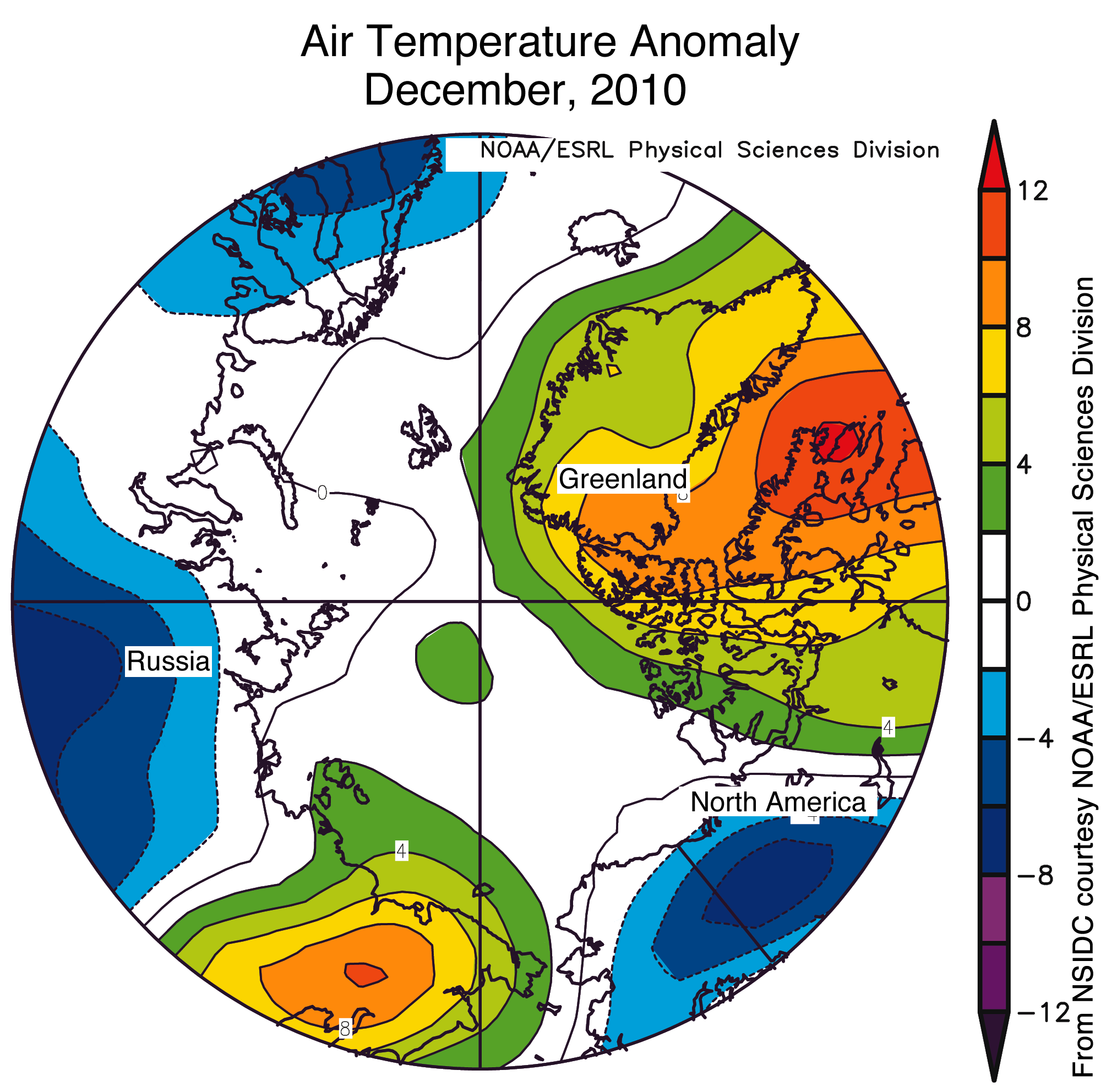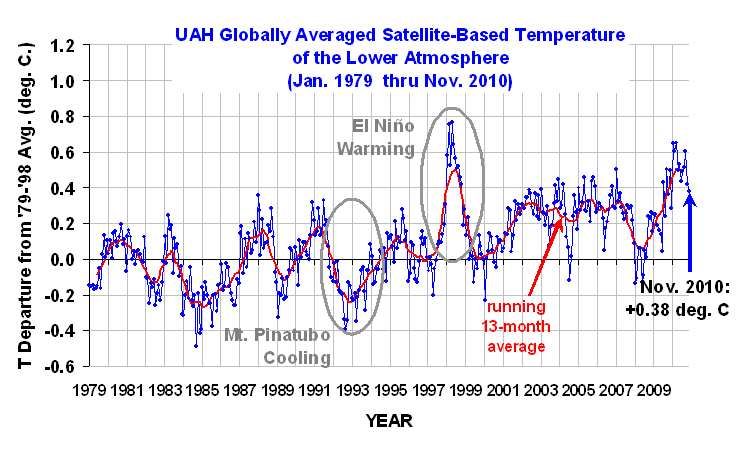Liberty83:
And what does any of what you said have to do with CO2 in the atmosphere? Are we to simultaneously assume that a) CO2 is unable to diffuse at some relatively even level throughout the entire atmosphere in the same way that any soluble compound will do in a fluid, and b) that even though it is unable to diffuse throughout the atmosphere, it somehow travels very, very far from its source of origin?
Diffusion obviously happens but is totally irrelevant to why Global Warming has concentrated in the Arctic. It used to be 3-5 degrees Fahrenheit higher than average up there. Now, that is escalating for reasons that does not have to do with more Carbon Dioxide anywhere but has to do with the change in color from white ice (Which reflects 80-90% of sunlight) to dark blue open waters, (Which absorbs 80% of sunlight).
And even then, of what relevance is the fact that the arctic is "warmer than normal"? The arctic temps are still WELL below the freezing point of water...
I indicated a chain of causation in which a shrinking ice cap; which was keeping temnperatures colder than what they would otherwise be because of the ice reflecting sunlight; is exposing more and more dark blue ocean water which absorbs sunlight -> getting warmer -> melting even more ice. The freshly exposed waters can get up to 6F warmer in summer
This causes the waters at the edge of the Arctic to keep from freezing (completely) during winter and instead they release heat up into the air (Warm air rises, cold air sinks).
When the warmer than usual air rises, it pushes the frigid polar air above it to the only place it can go. Southwards. Warmer water also evaporates more releasing more humidity into the air. This increase in humidity turns into more precipitation, whether it be snow or rain.
The whole world has been getting more humid for years because of the increase in warmth in all oceans (About 1F in non Arctic seas) This has been giving us more intense rains not just due to the increase humidity but because warmer air gives more energy to storms. The recent floods in Australia and Brazil were preceeded by higher sea temperatures right next to those countries.
Villabolo



